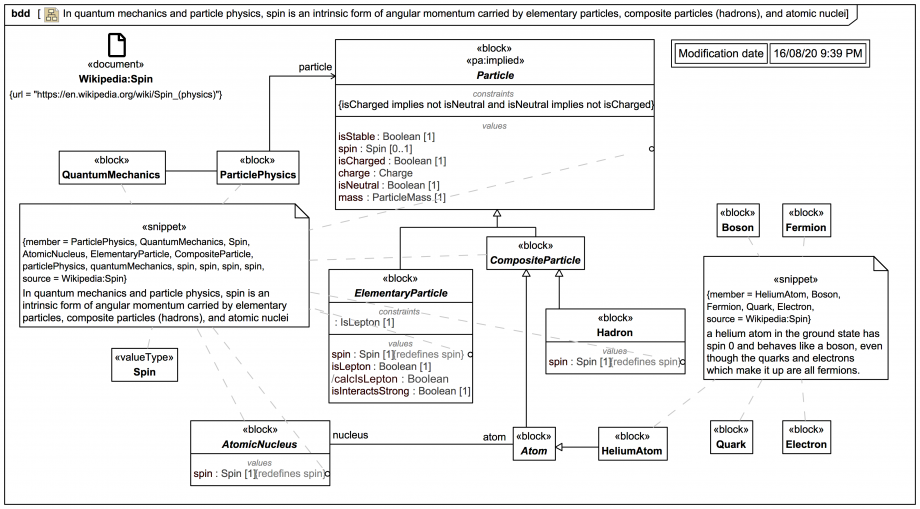Tags and keywords
Before we address spin, some value properties and a constraint involving charge have all now been floated up to the abstract Particle.
But does it make sense to talk about the "spin" of all types of Particle? The target snippet tells us spin is 'carried by elementary particles' and 'carried by ... composite particles (hadrons)'. That last bit seems to imply that not all composite particles have spin. And we also don't know yet whether there are types of particles other than composite and elementary (the physicists among you might already have thought of pseudo-particles). So to be safe, the multiplicity of spin:Spin in Particle is set to [0..1], but where it is known to definitely apply it is redefined to have multiplicity [1], such as in ElementaryParticle and Hadron.
Note that if a particle has spin with value 0 it still "has" a defined spin!
The snippet also does not actually say that an Atom can have spin, only that an AtomicNucleus can. Further down the same Wikipedia page it says, however:
Let's leave that matter for now, our main focus at this stage is on elementary particles (and primarily first leptons).


